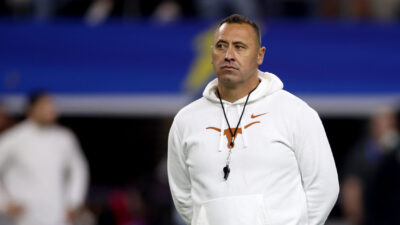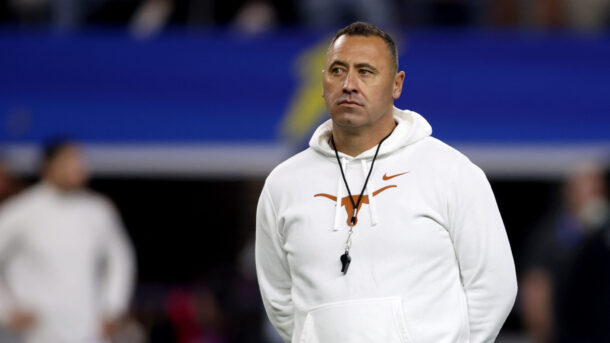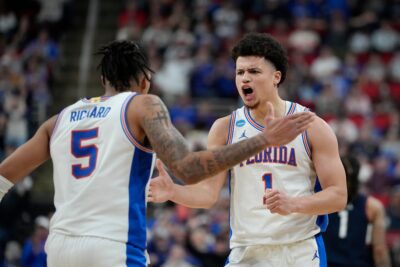Ad Disclosure
Syracuse’s nickname might be the Orange, but its basketball program has earned a place among the nation’s blue-bloods.
Although Syracuse’s fortunes have waned since leaving the old Big East for the ACC in 2005, a move Hall of Fame coach Jim Boeheim never fully embraced, the Orange have built a rich tradition centered around standout players, super-sized home crowds, deep NCAA Tournament runs and a cantankerous coach who orchestrated it all.
This page takes a closer look at the people and events that have helped shape Syracuse’s basketball identity through the years.
How Many Times Has Syracuse Won The NCAA Tournament?
The Orange won their only national championship in the NCAA Tournament era in 2003, when Carmelo Anthony led a victory against Kansas. Syracuse also claims 2 pre-Tournament titles in 1918 and 1926.
How Many Times Have The Orange Been to The Final Four?
Syracuse has advanced to the Final Four 5 times: In 1975 under coach Roy Danforth and in 1987, 1996, 2003, 2013 and 2016 under Jim Boeheim. Twice, in 1987 and 1996, the Orange finished as the NCAA Tournament runner-up.
Syracuse’s National Championship Team
Here’s a brief look at the Orange’s NCAA Tournament championships team and how it conquered March Madness.
2003: 30-5, Big East regular-season champion, NCAA champion
1980 NCAA Tournament path: Syracuse was the No. 3 seed in the East Region.
- Round 1: defeated No. 14 seed Manhattan 76-65
- Round 2: defeated No. 6 seed Oklahoma State 68-56
- Sweet 16: defeated No. 10 seed Auburn 79-78
- Elite Eight: defeated No. 1 seed Oklahoma 63-47
- Final Four: defeated No. 5 Texas 95-84
- Championship: defeated No. 6 Kansas 81-78
Season in review: Expectations were unusually high for a team coming off an NIT bid the previous season. But there was good reason for the high hopes with the arrival of a freshman class highlighted by future Hall of Famer Carmelo Anthony and blue-collar guard Gerry McNamara. Although things didn’t get off to a smooth start, with fellow freshman Billy Edelin getting suspended for 12 games for participating in a non-sanctioned summer league and a loss to Memphis in the season opener, things turned around quickly. With Anthony, McNamara and holdover Hakim Warrick leading the way, Syracuse to a 13-3 record in the Big East. Once the NCAA Tournament began, though, the Orange became the Mello Show, with Anthony leading the team in both scoring and rebounds in 5 of its 6 wins on the way to becoming the first 1-and-done freshman to carry his team to a national championship.
Syracuse’s Hall of Fame Coach
Jim Boeheim
Record at Syracuse: 1,014-441*
Overall Record: 1,014-441*
NCAA Tournament titles: 1
*- (15 wins in 2004-05, 23 wins in 2005-06, 22 wins in 2006-07, 7 wins in 2010-22 and 34 wins in 2011-12 were vacated by the NCAA because of rules violations).
Notable: Boeheim began his lifelong association with Syracuse as a walk-on guard on the freshman team in 1962. He ended his 6 decades of service to the university in 2023 when he was forced into retirement as its basketball coach. In between, the high-strung, sometimes cranky New York native worked his way up to become captain of an NCAA Tournament team before going on to win 10 Big East regular-season championships. 5 conference tournament crowns and the 2003 national title before being inducted into the Naismith Hall of Fame in 2005. Although Boeheim had 101 wins vacated from his record because of NCAA sanctions covering parts of 5 seasons, his 1,015 official victories still rank second all-time, behind only Duke’s Mike Krzyzewski.
Syracuse’s First-Round NBA Draft Picks
The Orange have had 24 players selected in the first round of the NBA Draft. Naismith Hall of Famer Dave Bing was the first, going with the second pick to the Detroit Pistons in 1966. Derrick Coleman was the highest selection, taken No. 1 overall by the then-New Jersey Nets in 1990. The other first-round selections are: Tyler Lydon (2017, Utah, 24th overall), Malachi Richardson (2016, Charlotte, 22), Chris McCullough (2015, Brooklyn, 29), Tyler Enis (2018, Phoenix, 18), Michael Carter-Williams (2013, Philadelphia, 11), Dion Waiters (2012, Cleveland, 4), Fab Melo (2012, Boston, 22), Wesley Johnson (2010, Minnesota, 4), Jonny Flynn (2009, Minnesota, 6), Donte Green (2008, Memphis, 28), Hakim Warrick (2005, Memphis, 19), Carmelo Anthony (2003, Denver, 3), Etan Thomas (2000, Dallas, 12), John Wallace (1996, NY Knicks, 18), Dave Johnson (1992, Portland, 26), Billy Owens (1991, Sacramento, 3), LaRon Ellis (1991, LA Clippers, 22), Rony Seikaly (1988, 9, NY Knicks), Dwayne “Pearl” Washington (1986, 13 NJ Nets), Leo Rautins (1983, Philadelphia, 17), Danny Schayes (1981, Utah, 13), Marty Byrnes (1978, Phoenix, 19).
Dome Court Advantage
The Orange have played their home games in one of the unique settings in college basketball since moving into the Carrier Dome (since renamed the JMA Wireless Dome) in 1980. Originally built for football, it is the largest arena in Division I basketball with a maximum capacity better than 35,000. And Syracuse fans fill the place up more times than not. The Orange has led the nation in total home attendance 28 times. Its crowd of 35, 642 for a game against Duke in 2019 is a single-game on-campus NCAA record. In 2018, the building underwent a major renovation that upgraded its air conditioning, lighting and sound systems while adding numerous amenities for fans.
All-Time Starting Five
The Orange has produced some of the best players in college basketball and NBA history. These 5 are the best of the best.
Point guard: Dwayne “Pearl” Washington
One of the flashiest guards ever to play college basketball, Washington earned his nickname as an 8-year-old in Brooklyn because of a playing style patterned after New York Knicks star Earl “The Pearl” Monroe. The younger Pearl came to Syracuse as the nation’s top-rated recruit, and he lived up to those expectations by getting the Orange to 3 straight NCAA Tournaments while amassing 1.490 points, 637 assists and 220 career assists. His personality and charisma played a major role in catapulting both Syracuse and the old Big East into the national consciousness.
Shooting guard: Dave Bing
The Orange’s first legitimate star, Bing led the team in scoring in all 3 of his varsity seasons, averaging better than 22 points per game each year. He was Syrracuse’s first consensus All-American and was the first player in school history to be taken in the first round of the NBA Draft. He finished his career with 1,883 points and 786 rebounds in 76 games while captaining a team that advanced to the Elite Eight of the NCAA Tournament as a senior in 1966. His roommate at Syracuse was a fellow guard named Jim Boeheim, who went on to have a fairly good career of his own. Bing was inducted into the Naismith Basketball Hall of Fame in 1990.
Small forward: Carmelo Anthony
Anthony played only 1 season for Syracuse. But it is arguably the greatest season ever by a member of the Orange. Hyped from the moment he arrived on campus as the No. 1 player in his freshman class, Anthony scored 27 points in his first college game, put his team on his shoulders and carried it all the way to the national championship that had eluded it in its 4 other trips to the Final Four. Anthony finished the season averaging 22 points, 10 rebounds and 2 assists per game. But he was at his best during the NCAA Tournament, leading the team in both scoring and rebounding in 5 of its 6 games on the way to being named Most Outstanding Player at the Final Four.
Power forward: Derrick Coleman
A relentless, physical low post presence who at 6-foot-10, 230 pounds was perfectly suited for the rough-and-tumble Big East of the 1980s, Coleman led the Orange to the national championship game as a freshman in 1987 and the Elite Eight 2 seasons later. He was a 2-time All-Big East selection and the league’s Player of the Year as a senior. Coleman finished his 4-year career as Syracuse’s all-time leading scorer and rebounder on the way to becoming the No. 1 overall pick in the NBA Draft. Although his scoring total of 2,143 points has since been surpassed, he still ranks second on the all-time list. His number 44 was retired by the school in 2006.
Center: Rony Seikaly
Born in Lebanon and educated in Greece, Seikaly became an All-American at Syracuse, graduating in 1988 as the school’s all-time leader in rebounds while ranking in the top 4 in both rebounds and blocked shots. He was only the second player in program history to record better than 1,000 points and 1,000 rebounds in his career. Along with Coleman, the 6-11 Seikaly helped get the Orange to the Final Four, where they lost to Indiana in the national championship game. His No. 4 jersey has also been retired.
Award-winning columnist Brett Friedlander has covered the ACC and college basketball since the 1980s.



